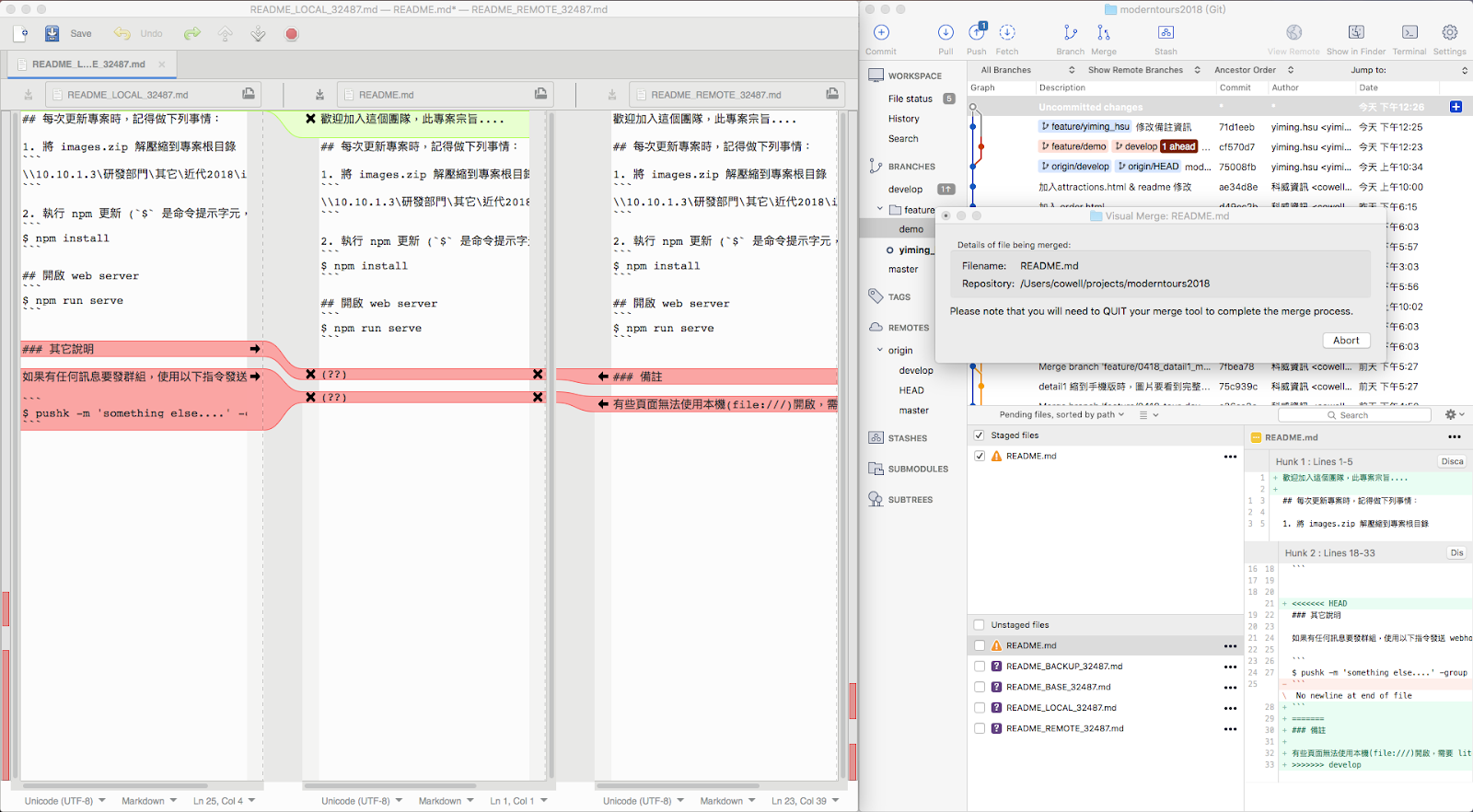

…on Windows and /Applications/Unity/Unity.app/Contents/Tools/UnityYAMLMerge

The UnityYAMLMerge tool is shipped with the Unity editor assuming Unity is installed in the standard location, the path to UnityYAMLMerge will be: C:\Program Files\Unity\Editor\Data\Tools\UnityYAMLMerge.exeĬ:\Program Files (x86)\Unity\Editor\Data\Tools\UnityYAMLMerge.exe Setting up UnityYAMLMerge for use with third-party tools

In each Scene, you place your environments, obstacles, and decorations, essentially designing and building your game in pieces. Think of each unique Scene file as a unique level.

Data and System Visualization Tools That Will Boost Your Productivityįinally, if you're more into visual tools, then you might find Meld useful as it provides similar experience to JetBrains' products.Use the UnityYAMLMerge tool to merge scene A Scene contains the environments and menus of your game.However it'd be really great if they had the ability to do.
#Diffmerge vs meld sourcetree software#
diff file and view that file in software like meld, vimdiff, or VSCode's diff viewer. They can get by for the most part using `git diff` to generate a. I'm trying to support a group of technical, non-programmer individuals but unfortunately my company does not want to pay or maintain enterprise GitHub seats for them, so they're stuck with plain old git. Need a recommendation for user-friendly PR software (no GitHub / Bitbucket / GitLab).My only gripe is that it takes a few seconds to open. I use meld mainly for migrating configs to new hardware. A merge tool like meld can be useful in those situations.īetter options than UltraCompare for compare and merge of FortiGate configs? When the upstream branch and your branch make different changes to the same block of code, which side should Git keep?). If your fork diverges too much from the upstream repo, you're likely to run into "merge" conflicts (e.g. Only fetch some commits from upstream, instead of allĬherry-picking is used grab an arbitrary commit from some branch and append it to the tip of your current working branch.


 0 kommentar(er)
0 kommentar(er)
